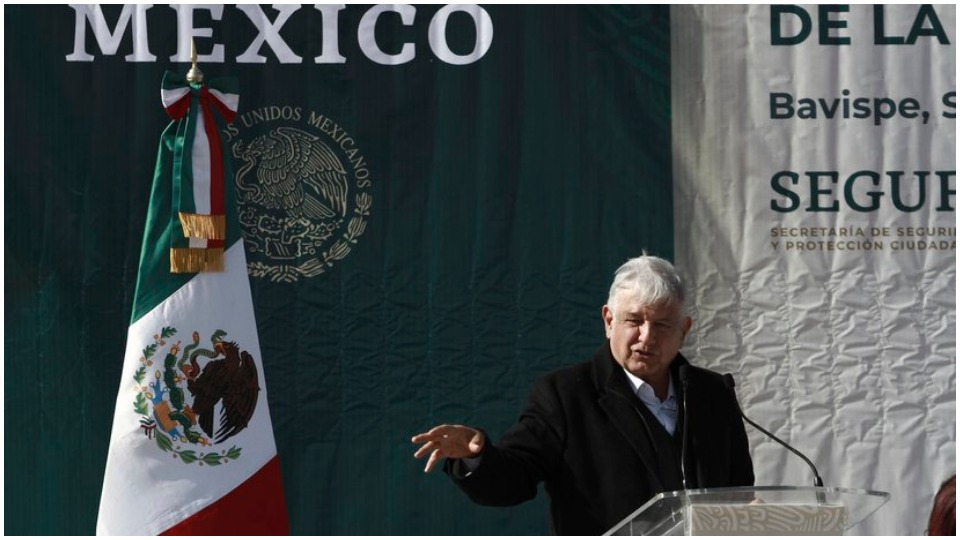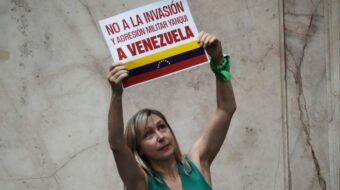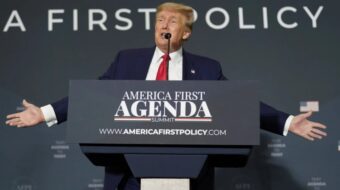
Mexico’s government intervened recently in two difficult situations beyond its borders. One is turmoil in Bolivia following a U.S.-assisted coup. The other concerns renewing the Community of Latin American and Caribbean States (CELAC). At issue there is regional integration and independence.
Bolivian President Evo Morales was forced out of office on Nov. 10. Two days later, he gained asylum in Mexico, together with ex-Vice President Álvaro García Linera. They traveled there on a Mexican Air Force plane.
A further 30 former officials of the Morales government received asylum in Mexico’s embassy in La Paz. By late December, nine of them were still there, unable to obtain safe conduct passes. They face arrest orders on charges ranging from treason to electoral fraud.
Away from the refugees’ safe harbor, leaders of Morales’s Movement Toward Socialism (MAS) political party were subjected to violent attacks and bizarre forms of abuse. The homes of former government officials were trashed. On Nov. 19, indigenous people in El Alto, near La Paz, were protesting when soldiers killed eight of them. Security forces harassed local collaborators of the 700 or so departed Cuban doctors. Journalists are being shot at and arrested.
By Dec. 23, 150 police and intelligence personnel were surrounding the Mexican Embassy—up from the usual six or so. Drones were overhead. Mexico’s government protested to officials in La Paz and to the Permanent Council of the Organization of American States and the Inter-American Commission on Human Rights.
Troubles mounted. Spain’s chargé d’affaire Cristina Borreguero and consul Álvaro Fernández on Dec. 27 made a “courtesy visit” to Mexican ambassador María Teresa Mercado. Bolivian security forces blocked their automobiles from entering the Mexican Embassy precincts. Among the passengers were six hooded men, members of Spain’s “Guardia Civil” who entered Bolivia on Nov. 14. Suspecting that Borreguero and Mercado were plotting something, the government expelled them, along with the hooded men.
On Jan. 2, Mexican President Andrés Manuel López Obrador declared that, “the right of asylum for Mexico is sacred; it’s part of international law.” In sheltering the ousted officials, his government is implicitly registering both support for progressive change in the region and opposition to U.S. intrusion.
On Jan. 8, López Obrador welcomed the meeting of CELAC to Mexico City. The foreign ministers and other officials of 29 member nations had gathered for a two-day conference. This year Mexico is serving as CELAC’s president pro tempore. CELAC’s goal is regional unity and independence. Mexico’s assumption of a leadership role as regards CELAC also represents a stand against U.S. interventionism.
Karen Longaric, foreign minister of the coup government in Bolivia, criticized Mexico for excluding her government from the preparations for the CELAC meeting. She pointed out that the Bolivian government under Morales was the president pro tempore of CELAC in 2019. She didn’t mention the matter of a coup or the likelihood that Bolivia will be leaving CELAC.
Collaborating with Brazil, Mexico’s government had initiated planning for CELAC in 2009. At a meeting of the Rio Group a year later, Mexico called for the formation of CELAC. Representatives of 33 Western Hemisphere nations attended CELAC’s first summit meeting in 2011 in Caracas. The United States and Canada were not invited.
The CELAC summit in Havana in 2014 marked a high point. The assembled nations declared “Latin America and the Caribbean [to be] a Zone of Peace based on respect for the principles and rules of International Law …”
Friction over U.S. efforts to unseat the Venezuelan government of President Nicolás Maduro led to the cancelation of CELAC meetings. With support from Argentinean President Alberto Fernández, López Obrador worked to have Mexico take the lead in refurbishing CELAC.
Among various hemispheric alliances, only the Organization of American States (OAS) rivals CELAC’s constituency and reach. The U.S. government established the OAS to serve its anti-Communist purposes during the Cold War, and the OAS is still compliant. It’s headquartered in Washington and the United States pays 60% of the organization’s expenses.
Mexican Foreign Secretary Marcelo Ebrard described the objective for the recent CELAC meeting as “the strengthening of institutions and their mechanisms and giving new force to unity.” Discussion touched upon: creation of a network for innovations, aeronautical cooperation, a “scientific ecosystem,” collaboration among universities, cooperative purchasing (especially of medications), disaster relief, anticorruption methodology, a “CELAC–China forum,” and anti-poverty initiatives.
Certain issues prioritized beforehand weren’t discussed. These were: counter-revolutionary intervention in Venezuela, the coup in Bolivia and confrontation over asylum, and the future of OAS Secretary General Luis Almagro; he’s seeking reappointment and is reviled by progressives. The next CELAC summit takes place in September 2020 in conjunction with a session of the UN General Assembly.
Speaking to Mexican diplomats on Jan. 7, López Obrador identified non-intervention, cooperation with development, and self determination as basic principles for Mexico. They are “masterly,” he declared. For him, Mexico is the “big brother” for Latin America and the Caribbean.
In that capacity, Mexico voted no in 1962 when the OAS voted to exclude Cuba; it was also the only dissenter in 1964 as the OAS approved economic sanctions against Cuba.
Mexican governments of the past have provided asylum for Jose Martí, Mohammed Reza Pahleví (the Shah of Iran), Rigoberta Menchú, Fidel Castro, Ernesto “Che” Guevara, Pablo Neruda, Leon Trotsky, Salvador Allende’s family, and refugees from the Spanish Civil War.
Mexico provided the anti-fascist Spanish Republic of the 1930s with material aid. The Soviet Union did likewise. They were alone among the nations of the world.










